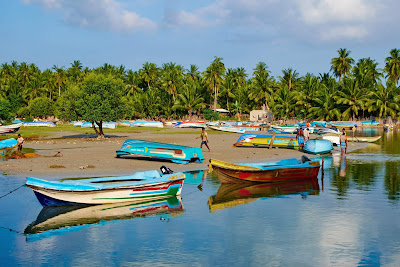Despite the advancement in certain aspects of life in Sri Lanka, it is still a developing nation with insufficient funds to provide appropriate medical and hospital facilities in rural areas.
The foundation supporting a National Trauma Service was established in September 25 in 2011, when a Deed of Trust was signed by Dr. David A Young, Nihal de Run, Nalin Patikirikorale, Indrajith Fernando and Yoland (Bobby) Hansen as Trustees of the Trust in Colombo. It was also granted legal status in Australia with having Governor of Victoria Prof. David de Kretser as its Patron and Dr. Ranjith Hettiarachchi and Abbas Akbarally as Vice Patrons. Nihal de Run was appointed as the Chief Executive Officer with Dr. Greg Hoy as Vice President. The Foundation appointed cricketing legends Muttiah Muralidharan, Kumar Sangakkara, Dav Whatmore and Shane Watson as its Ambassadors. The project was launched with the understanding of the Ministries of Health of Sri Lanka that the entire project cost would be shared by the Foundation and the Government. The project was designed in two phases, the first phase to build the Emergency and Accident Unit that would cost a sum of US$ six million. Of this, the Foundation is funding US$ two million, while the rest would be funded by the Sri Lankan Government's Ministry of Health. The first phase also includes the drawing of blueprints and engineering sketches, while the construction work is scheduled to commence in November 2015, following the appointment of the Central Engineering and Consulting Bureau of Sri Lanka(CECB) on a turnkey basis.
The second phase of the project is to equip the new building with state of the art surgical equipment and machinery, operating theatre, furniture, ward beds, etc.
The Foundation is committed to provide a further donation of US$ 1million in kind, while the rest would be provided by the government.
Explaining as to how the fund raising programme is in process, Foundation's CEO Nihal de Run said they have already raised a sum of US$ 1.6 million, but the Foundation seeks to raise another and is in need of another US$ 400,000 to support the building project.
The fund raising is currently being conducted both locally and internationally. The completion of the project and the handing over of the new building is scheduled for end 2017.
Leading Corporations such as Sri Lanka Telecom, the Asiri Group of Hospitals, John Keells Group, Baurs, Phoenix, Tokyo Cement Company (Lanka) Ltd., Penguin, Brandix and the Melbourne Orthopedic Group have already funded the project to date. There have also been some very large donations made by prominent individuals in Australia and Sri Lanka.
Construction of this Trauma Unit would assist people who are badly injured in motor vehicle accidents, industrial and domestic accidents, burns, bites and vision impairment and injuries lingering post tsunami. The growing tourist industry in the Eastern Province also calls for treatment to be available to tourists who are injured during recreational incidents. BEAP’s mission is to empower doctors in Sri Lankan Teaching Hospitals to improve health care services, by providing them with medical resources, training and support to build the necessary infrastructure within their teaching hospitals and to extend the National Trauma Service from Karapitiya to Batticaloa and beyond.
The Rotary Club of Strathmore, Victoria, Australia has adopted the project BEAP as their international project and they have linked with the Rotary Club of Colombo East and the Rotary Club of Batticaloa, to help with the project. The estimated building cost would be Rs. 820 million (approximately US$ 6.3 million) and the fit-out and equipment cost is estimated at Rs. 260 million (approximately US$2 million ).
source:http://www.dailynews.lk/?q=2015/11/11/features/batticaloa-gets-fully-fledged-hospital
